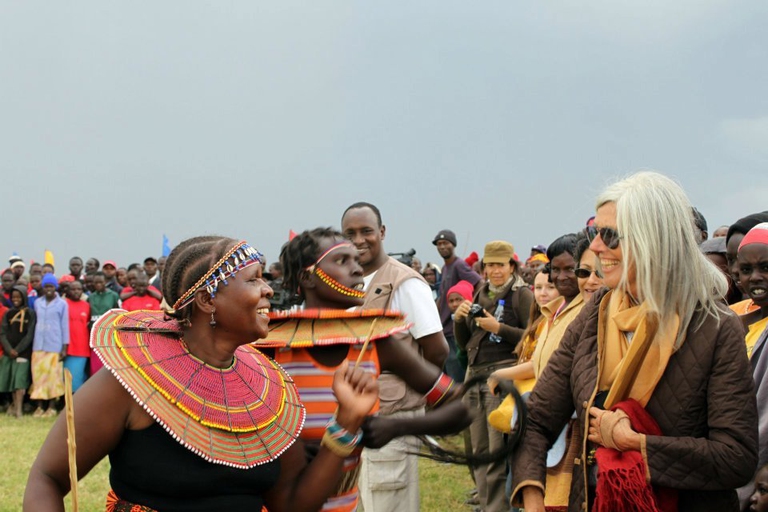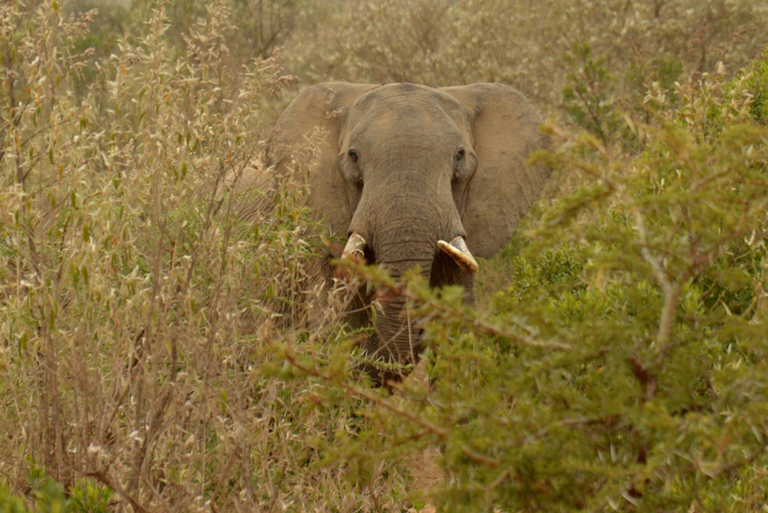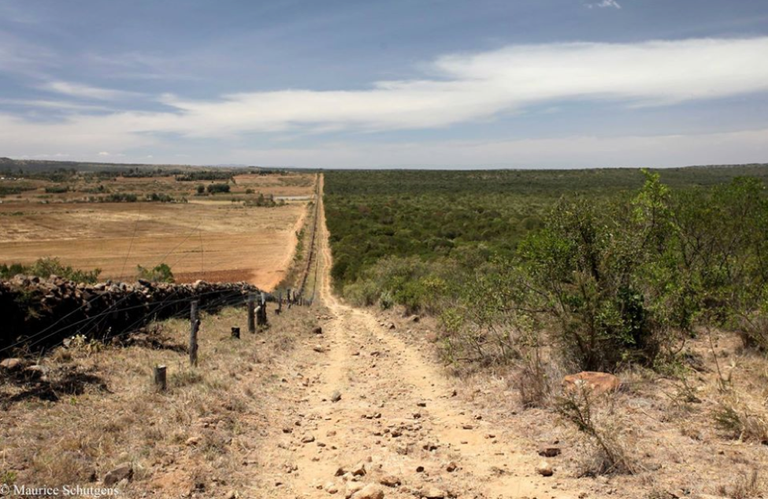
Our species took its first steps in a world covered in trees. Today, forests offer us sustenance, shelter, and clean the air that we breathe.
Kuki Gallmann is an Italian born Kenyan who established the Laikipia Nature Conservancy in Ol Ari Nyiro – which means the “place of great springs” in the local Maa language – an area on the edge of the Great Rift Valley, in the north Kenyan region of Laikipia: what used to be a ranch is now a protected
Kuki Gallmann is an Italian born Kenyan who established the Laikipia Nature Conservancy in Ol Ari Nyiro – which means the “place of great springs” in the local Maa language – an area on the edge of the Great Rift Valley, in the north Kenyan region of Laikipia: what used to be a ranch is now a protected territory home to wildlife such as elephants, lions and cheetahs. Gallmann has recently faced invasions of her land by cattle herders escaping severe drought. Furthermore, an attack has left her recovering in hospital with gunshot wounds, as well as the wildlife of this incredible area at risk.
Gallmann established the Gallmann Memorial Foundation in 1983 in the wake of the deaths of her husband and son, with whom she had moved to Africa in 1972. To “make something positive out of the tragedy”, as she explains, she dedicated her life to protecting the 35,000 hectare ranch that the family had acquired in Laikipia. A conservation pioneer, she sold her cattle, gave up the ranching business and embarked on a mission to unite people and nature by encouraging the development of local communities whilst safeguarding biodiversity.
Through the adoption of the Mukutan conservancy REDD+ project the Gallmann Memorial Foundation contributes to providing a sustainable long-term revenue stream to safeguard the area’s biodiversity and educating the local community in the preservation of flora and fauna. In addition, through the Laikipia Highland Games, a yearly event that unites the valley’s nine tribes in a sporting confrontation, it promotes intertribal peace and coexistence.
Gallmann’s work as a writer – most notably as author of the bestseller I Dreamed of Africa, which was adapted into a film featuring Kim Basinger – and her unrelenting effort as a conservationist have earned her international praise and fame.
The Gallmann Memorial Foundation has been recognised as a key organisation in the protection of biodiversity in the region, leading to the International Union for the Conservation of Nature (IUCN) labelling it Key Biodiversity Area and the United Nations Environment Programme (UNEP) assigning it the status of designated protected area. Over the last 30 years the former ranch has been a refuge for a wide variety of endangered species and Gallmann has led the fight against poachers, whose lust for ivory is threatening the African elephant with extinction. The fight against the trade in its tusks gained increased attention when the country conducted the largest ever burning of confiscated ivory a year ago:
“Ensuring that the world gets the message strong and clear that there is no value to ivory … burning something has the significance of an end and a new beginning: a fire can be purifying and can be destructive”. (Kuki Gallmann)
Currently, however, severe droughts, which led President Uhuru Kenyatta to declare a state of emergency in February, have caused a spike in regional insecurity. Ol Ari Nyiro has become a focal point in the conflict as it is one of the few areas in Laikipia that still has reliable water due to the great efforts made to maintain its biodiversity and forests, as well as ensure that water sources remain uncontaminated.
Cattle herders fleeing the drought have arrived in the area, moving tens of thousands of animals onto private land without authorisation, and brandishing weapons and fire when confronted in what is characterised by locals as an invasion. Residents claim that politicians are inciting grazers and even militias to take the land by force, hoping to win support for the elections that will take place in August.
As many as 30 people have been killed recently and Laikipia has been labelled a dangerous area by government authorities who sent troops on the 17th of March to try and restore law and order. In addition, cattle poses a severe threat to biodiversity as it destroys vegetation by causing erosion, spreads diseases among wildlife and pollutes, as well as dries up, water sources.
On the 29th of March one of the most important lodges on the Laikipia Nature Conservancy, the Mukutan Retreat Lodge, was burnt down by illegal herders who also shot at Gallmann’s daughter Sveva, who was lucky to escape unharmed. In addition, 4,000 hectares of vegetation were damaged by arson.
The situation escalated further on the 23rd of April when Kuki Gallmann went to investigate another instance of arson on her land and was ambushed and shot twice in the stomach. Having to be airlifted to hospital for surgery, most recent updates indicate that she is in intensive care as her wounds have infected, according to a post on her Facebook page published on the 2nd of May. Sveva released a statement indicating that when her mother was shot there were no cows in sight but rather that the situation is best described as, “a well planned invasion led by militia across the region … so as to disrupt the good relationship with our pastoralist neighbours”.
“If we change our attitude toward the environment and toward each other there is no need for war and conflict, there is nothing that people can do to scare or make me loose heart … they will not be able to change the shape of the hills”. (Kuki Gallmann)
As the attackers remain at large, drought continues and elections approach, tensions in the region remain high. Polarisation is further exacerbated by depictions of the conflict as being caused by the white elite greedily holding land that belongs to disenfranchised blacks, according to some; or corrupt politicians fomenting an armed invasion of private lands for personal and political gains, say others. What is most needed, however, is unity in the face of crippling drought and in order to carry forward Kuki Gallmann’s legacy of protecting Kenya’s biodiversity.
Siamo anche su WhatsApp. Segui il canale ufficiale LifeGate per restare aggiornata, aggiornato sulle ultime notizie e sulle nostre attività.
![]()
Quest'opera è distribuita con Licenza Creative Commons Attribuzione - Non commerciale - Non opere derivate 4.0 Internazionale.
Our species took its first steps in a world covered in trees. Today, forests offer us sustenance, shelter, and clean the air that we breathe.
Poachers in Africa are encroaching on wildlife land and killing rhinos in travel hot spots now devoid of visitors due to the coronavirus pandemic.
Actor and environmental activist Leonardo DiCaprio has contributed two million dollars to a fund to protect Virunga National Park in Congo from threats such as terrorism, the coronavirus and poaching.
For the first time in seventeen years, Iceland’s two main whaling companies won’t resume whale hunting. The announcement concerns this year’s season but could carry into the future.
The relationship between the coronavirus and wildlife is complex: while the pandemic may lead to a reduction in the illegal trade in wild animals, it may also encourage it in other respects.
The largest coral reef in the world is severely threatened by climate change, but researchers are developing strategies that could contribute to saving the Great Barrier Reef.
NGO Free the Bears has opened a mountain sanctuary for moon bears in Laos. With the government’s help, it aims to close all bile farms by 2022.
Seychelles have extended its marine protected area, which now covers over 400,000 square kilometres, an area larger than Germany.
The tapir was reintroduced into Brazil’s Atlantic Forest, the country’s most at-risk ecosystem. The species can play a key role in the forest’s recovery.











